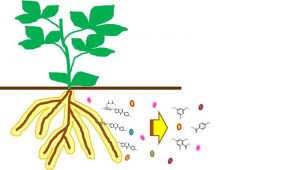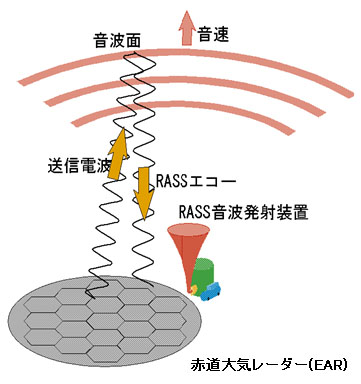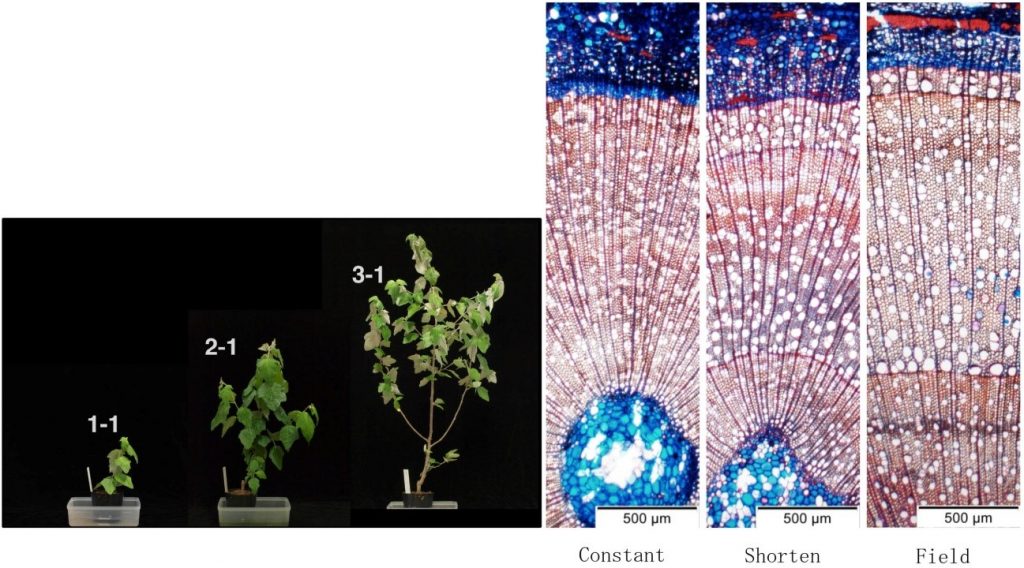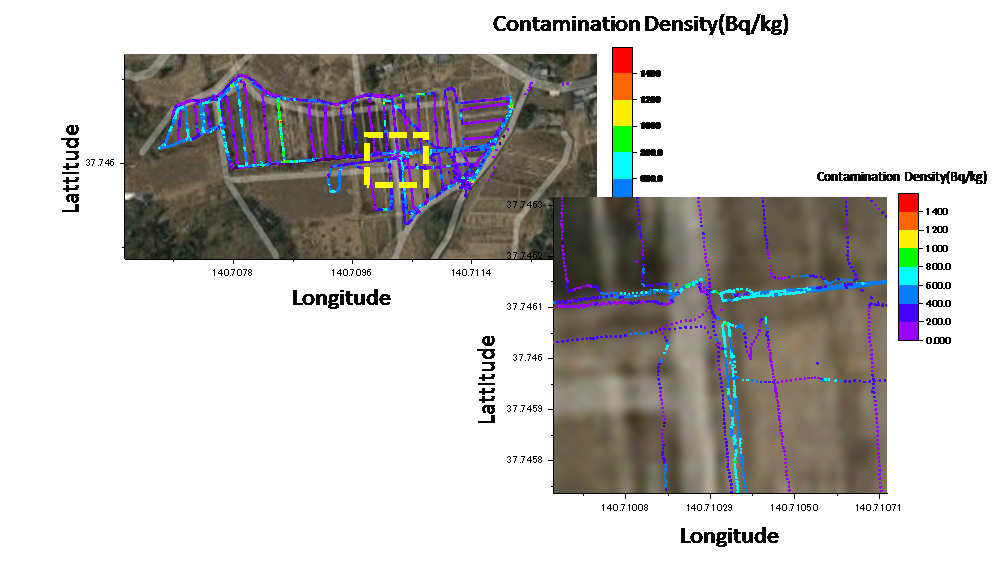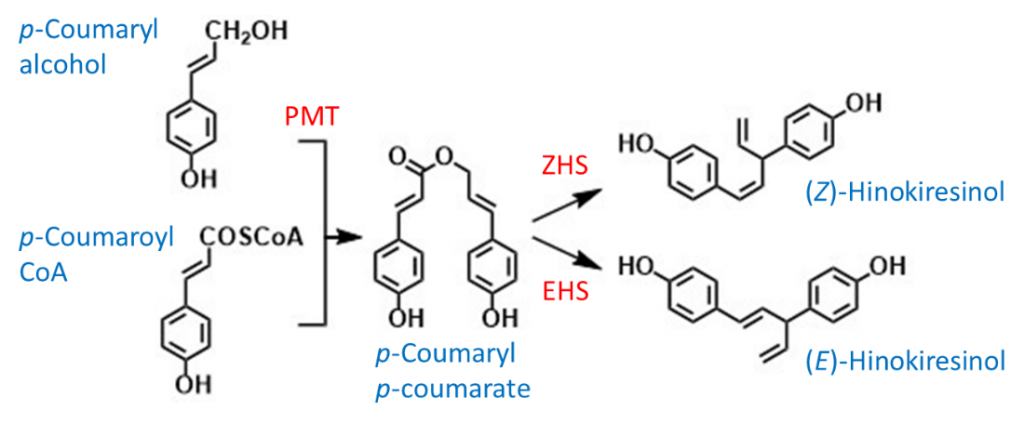2017 Activity Report for Mission 1: Environmental Diagnosis and Regulation of Circulatory Function
Updated: 2018/06/08
Research1:Biosphere−Atmosphere Exchange of Trace Molecules (Kenshi Takahashi)
We study carbon dynamics from the ecosystem scale to the plot scale in forest environments through in-situ measurements of trace gas fluxes based on micrometeorological methods and automated closed-chamber techniques.
Publications, etc.
Iwata, H., M. Mano, K. Ono, T. Tokida, T. Kawazoe, Y. Kosugi, A. Sakabe, K. Takahashi, and A. Mityata, Exploring sub-daily to seasonal variations in methane exchange in a single-crop rice paddy in central Japan, Atmospheric Environment, 179, 156-165, doi: 10.1016/j.atmosenv.2018.02.015, 2018.
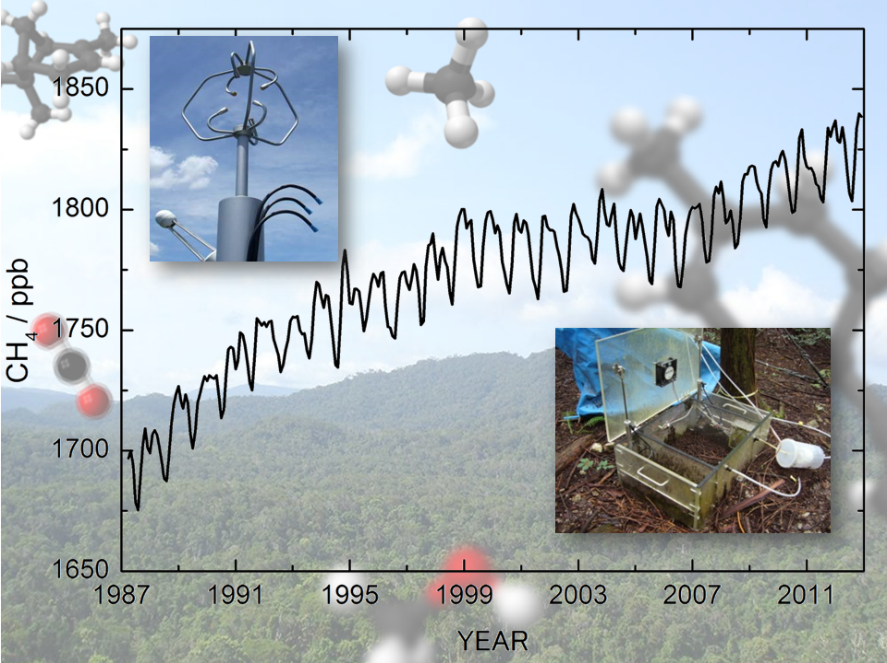
Research 2 :Analysis of plant metabolites in the rhizosphere (Akifumi Sugiyama)
The aim of this research is to elucidate the molecular mechanism of plant microbe interaction in the rhizosphere. We analyze transporter genes and metabolites which are involved in the plant microbe interactions.
Figure. Secretion of isoflavones into the rhizosphere of soybean
Publication
A Sugiyama, Y Yamazaki, S Hamamoto, H Takase, K Yazaki, Synthesis and secretion of isoflavones by field-grown soybean. Plant and Cell Physiology 58 (9), 1594-1600 (2017).
Research 3: High Resolution Observations of Equatorial Temperature Profiles with EAR-RASS (Hiroyuki Hashiguchi, Toshitaka Tsuda, Ina Juaeni, Halimurrahman, and Noersomadi)
In the equatorial region, cumulus convection is actively excited by strong solar radiation heating, and solar energy is carried to the whole Earth’s atmosphere by circulation and wave motion driven and excited by them. Especially the Indonesian region is the most active region of cumulus convection activity and it has been generating large year-to-year fluctuations, which have great influence on global environmental change through El Nino etc. We have developed the technique to continuously measure temperature profiles in the tropical troposphere with high time-resolution by adopting Radio Acoustic Sounding System (RASS) to the Equatorial Atmosphere Radar (EAR) at Kototabang, west Sumatra, Indonesia.
Radio Acoustic Sounding System (RASS)
Publication
Ina J., H. Tabata, Noersomadi, Halimurrahman, H. Hashiguchi, and T. Tsuda, Retrieval of Temperature Profiles using Radio Acoustic Sounding System (RASS) with the Equatorial Atmosphere Radar (EAR) in West Sumatra, Indonesia, Earth, Planets and Space, 70:22, doi:10.1186/s40623-018-0784-x, 2018.
Research 4: The control of annual rhythm of wood formation under artificial conditions (Kei’ichi Baba)
Wood formation has an annual rhythm, which restricts the pace of research in this field. We observed tree shape and wood tissue that formed under artificial atmospheric conditions to shorten the annual rhythm. Poplar trees formed multi-branched architecture and growth rings in the wood tissue.
Publications, etc.
Baba, K., Kurita, Y., Mimura, T.: Wood structure of Populus alba formed in a shortened annual cycle system. J Wood Sci, 64, 1-5 (2018)
Baba, K., Kurita, Y., Mimura, T.: Architectural morphogenesis of poplar grown in a shortened annual cycle system. Sustain Humanosphere, 13, 1-4 (2017)
The 68th Annual Meeting of the Japan Wood Research Society, Kyoto, Japan (Mar, 14-16, 2018)
The59th Annual Meeting of the Japanese Society of Plant Physiologist, Sapporo, Japan (Mar,28-30, 2018)
Research 5: Collaborative studies in Fukushima since the Great East Japan Earthquake (Yoshikatsu Ueda, Akifumi Sugiyama and Shiro Suzuki)
We have been discussing the environmental research in Fukushima after the Great East Japan Earthquake. We have shown the Cs-137 decontamination technique by using ultra-fine bubble as for collaborative research with Fukushima Agricultural Centre. We have also been surveying the environmental monitoring with Univ. of Tokyo. As for international research, we discuss energy crop planting and green infrastructure to preserve agricultural field.
Visualizing environmental radiation map via KURAMA (Kyoto University RAdiation MApping system)
Symposium
7th Symposium of Collaborative Researches in Fukushima Since the Great East Japan Earthquake (357th RISH Symposium).
Research 6: The fundamentals of the heartwood formation mechanism (Shiro Suzuki)
It is necessary to improve the quality of timber, such as anti-rotting and drying properties, in order to increase the carbon storage ability of timber as much as possible. The secondary metabolites accumulate in heartwood greatly affect wood properties. However, much remains to be elucidated about the biosynthetic mechanisms of heartwood secondary metabolites. In this study, we aim to elucidate the biosynthetic mechanisms of two major heartwood secondary metabolites, lignans and norlignans, in order to establish the regulatory fundamentals of heartwood formation.
Research Activities
We are currently elucidating the tertiary structure of (Z)-hinokiresinol synthase, a key enzyme in norlignan biosynthesis, as well as the functions of uncharacterized enzymes involved in norlignan and lignan biosynthesis.
Publications, etc.
Azuma A., Naoki S., Shiro S., Yamamura M., Mikami B., Toshiaki U., X-ray crystal structural analysis of (Z)-hinokiresinol β-subunit. The 62th Lignin Symposium, Nagoya, Japan, October 26-28, 2017.
Azuma A., Naoki S., Shiro S., Yamamura M., Mikami B., Toshiaki U., X-ray crystal structural analysis of β-subunit towards elucidation of molecular mechanism of enzymatic reaction by (Z)-hinokiresinol synthase. The 68th Annual Meeting of the Japan Wood Science Society, Kyoto, Japan, March 14-16, 2018.
Figure. Biosynthetic pathway of hinokiresinols. PMT, p-coumaroyl-CoA:monolignol transferase; ZHS, (Z)-hinokiresinol synthase; EHS, (E)-hinokiresinol synthase
Research 7: Development of MU radar real-time processing system with adaptive clutter rejection (Hiroyuki Hashiguchi and Mamoru Yamamoto)
Strong clutter echoes from a hard target such as a mountain, building, or aircraft sometimes cause observation problems with atmospheric radars. We develop a real-time processing system to adaptively suppress clutter echoes using MU (Middle and Upper atmosphere) radar.
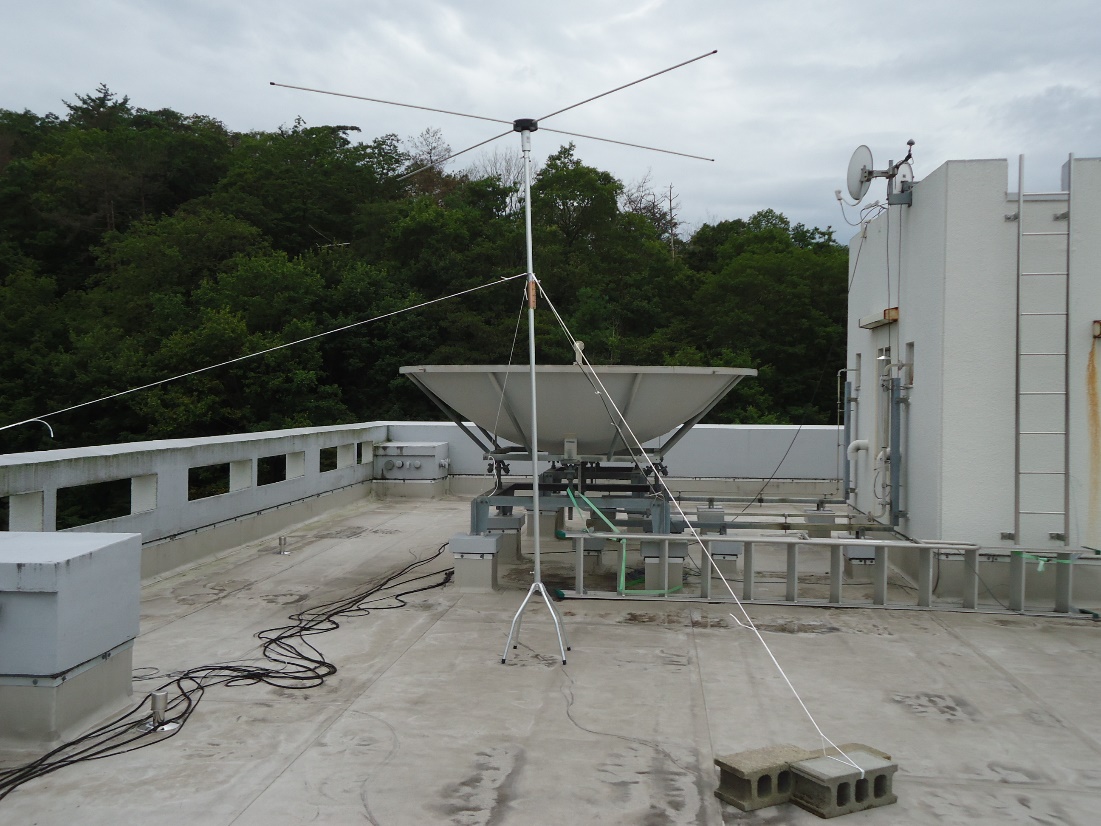
Receiving antenna attached to MU radar
Publications
H. Hashiguchi, T. Manjo, and M. Yamamoto, Development of Middle and Upper atmosphere radar real-time processing system with adaptive clutter rejection, Radio Sci., 53, doi:10.1002/2017RS006417, 2018.
Research 8: Biological response of tropical invasive ants in temperate regions (Chin-Cheng Yang)
This project aims to empirically quantify how tropical invasive ants respond to low temperature as an extreme survival stressor. The outcome of this research can facilitate our understanding of the mechanisms underlying cold adaptation of invasive ants.
- A standard chill-coma recovery test is conducted where two invasive ants (longhorn crazy ant and yellow crazy ant) are challenged with various low temperatures (0~10C) for at least 15 hours, and their recovery patterns (recovery rate and mortality at the end of the experiment) are carefully monitored (Figure).
- A workshop entitled “Mini-symposium on Invasive Ant Research” was held on 22 Feb, 2017, at the School of Biological Sciences, Universiti Sains Malaysia (USM), Penang, Malaysia, co-organized by Prof. Chow-Yang Lee (from USM) and Dr. Chin-Cheng Yang (RISH). Dr. Yang presented a talk entitled, “Ecology, impact, and management of invasive ants in temperate regions”, which covered the results of this project.
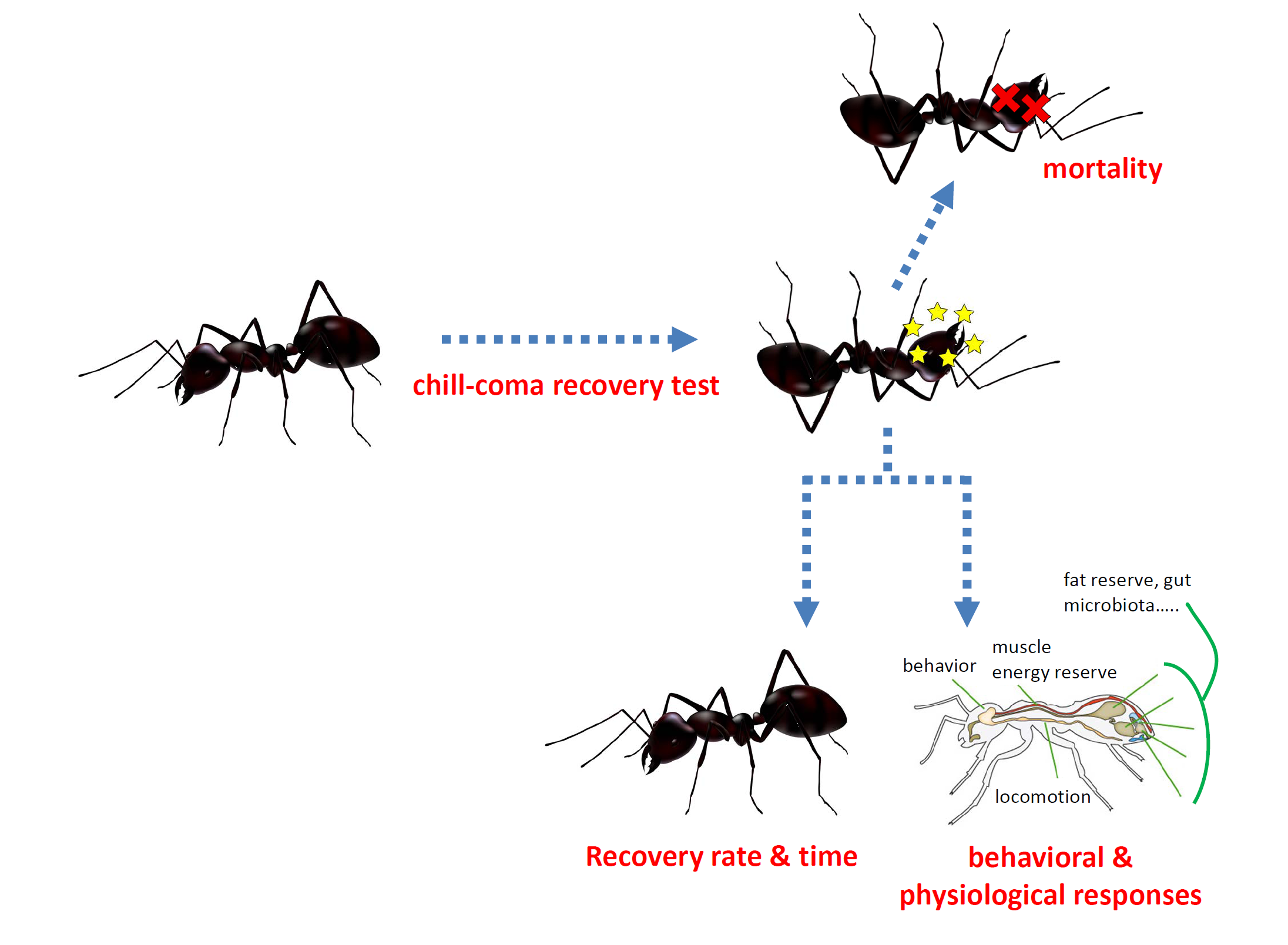
Figure. Research flow of the current project
Research 9: Observations of atmospheric minor constituents using lidar techniques(Masanori Yabuki)
Atmospheric lidar is a powerful tool for monitoring atmospheric constituents, which are key parameters for understanding the mechanisms underlying environmental changes and localized extreme weather events. In FY2017, we developed a high spatial resolution lidar with a multispectral detector to construct a system that can obtain the detailed distribution of aerosol particles in the small area.
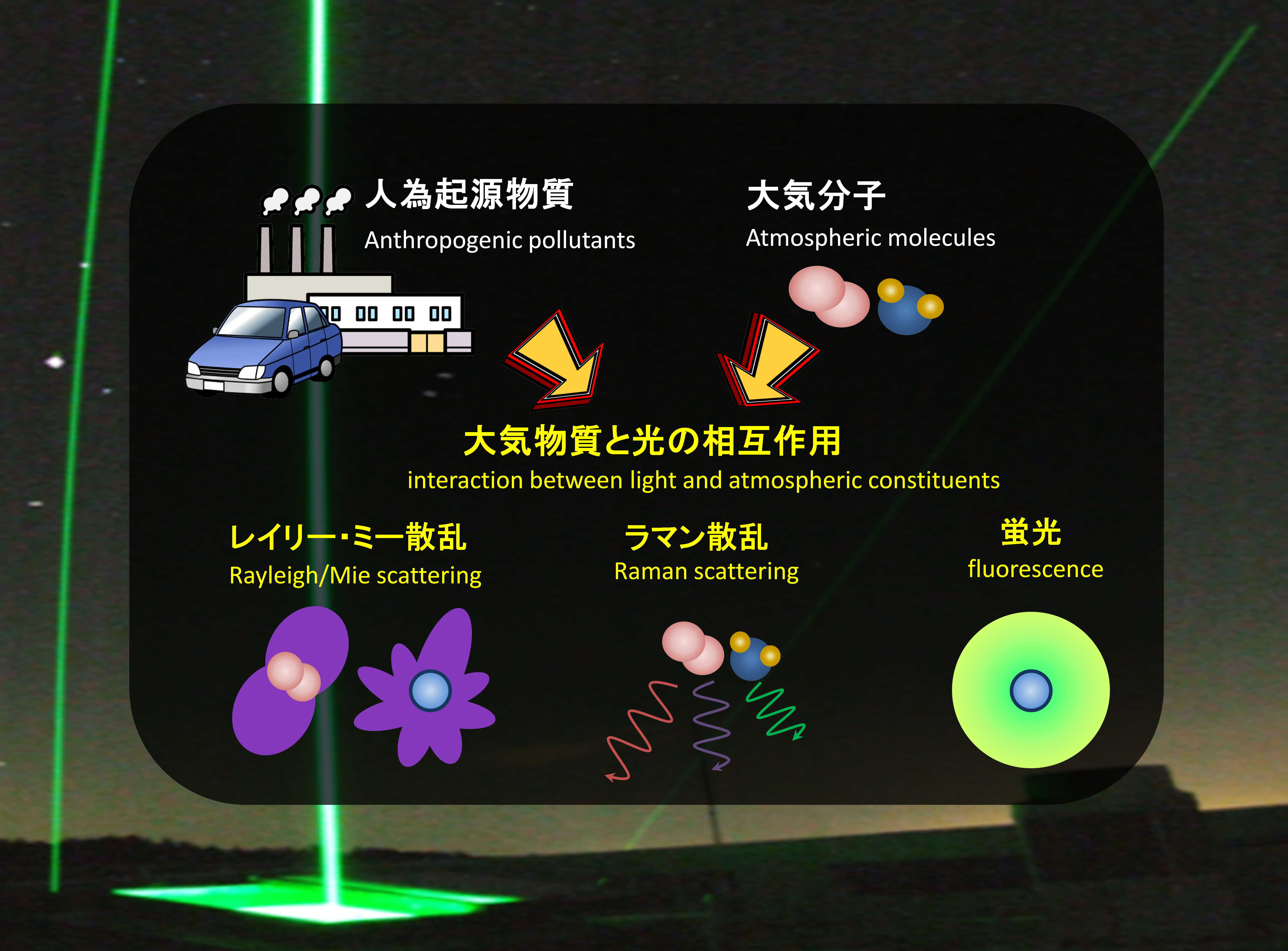
Publication
Yabuki, M., F. Kitafuji and T. Tsuda, High Spatial Resolution Aerosol Lidar with a Multispectral Detector, The 10th Asian Aerosol Conference (Jeju, Korea), PS-IM15, July. 2017.


